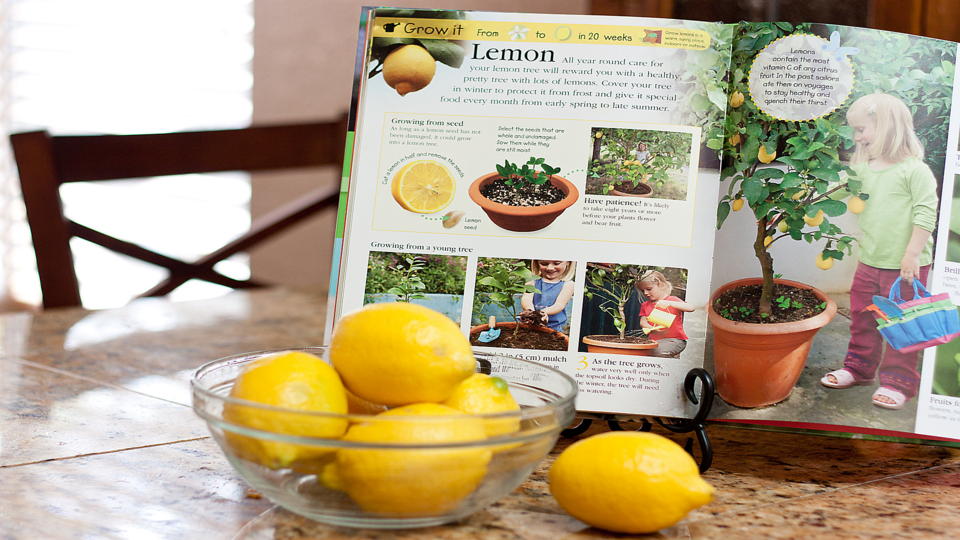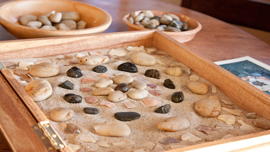Thematic exploration: Learning ideas to love

Create fun summer learning activities using this creative teacher tip.
Children are like little learning sponges. They see the world with curiosity and wonder, and it’s our job as parents and teachers to nurture that curiosity and help them explore even deeper.
Teachers use thematic learning to get kids excited about learning. Often the kids are having so much fun they don't even know they're learning!
Thematic exploration is a method of teaching by building learning activities around a fun and interesting theme. As kids are engaged in play or meaningful activities, there will be conversation, new vocabulary words, and sensory experiences to explore, providing an excellent railway for language development. It’s an opportunity to have multiple conversations with your child on a specific topic. Repetition of core vocabulary and concepts will continue to provide language development opportunities as kids are engaging in these meaningful experiences.
With every new experience, kids are developing their schema. In the teaching world we talk with our students about how schema is all of that “stuff” that we already hold in our brains. If there is a hot air balloon in our read aloud book, for example, some students might have seen one on television or may have even seen one floating in the air. They may have read about hot air balloons in another book or had a friend talk about it once. As kids are growing, developing, experiencing and playing, they are also developing their schema. They file away all of their experiences and save them in their mental filing cabinets. Someday, when the time is right, they can open up that mental filing cabinet and grab information about a certain topic, which may help them better comprehend the text they are reading or listening to, or make deeper connections in subjects they are studying such as science and social studies.
Where to start when developing thematic explorations
Parents often ask me where they should begin. I always tell parents to start with their kids. It’s important to help kids find things they are interested in. When I ask my own kids what they like and are interested in, they will often answer with things they can physically do. They say they like basketball, soccer, and playing outside. Thematic exploration begins with a topic and then moves into things kids like to do. Does your child get excited when a hummingbird flies into your garden? Are they constantly calling you over to the window when squirrels run across the fence? Does your child ask if they can help when you are planting flowers in the garden? Do they collect endless amounts of rocks each time you go to the beach or the park? Each of these things can be a clue to finding out the topics that interest your child.
I have to admit, there have been times when I have developed a really cool thematic exploration for my kids and they had absolutely no interest in it. Usually, I can trace the reason right back to myself. I didn’t watch my kids to find out what they were interested in. Instead, I picked a topic that I thought would be really fun and interesting and ran with it. If this happens to you, try not to have your feelings hurt. Keep trying! Eventually your hard work will pay off and you’ll see your kids learning an engaged in a way you’ve never seen before.
Types of activities
When developing activities for thematic explorations, I usually start with books. The public library should be your best friend here! When I look for books, I usually start by browsing the websites of my favorite online booksellers. I also browse thematic tables at my local bookstores. I write down titles of books I’m interested in. Searching for books this way is easier for me because my local public library website doesn’t seem quite as refined as the online booksellers. Once I find my list of books, I can take this to the library or reserve my favorites online and pick them up when they are pulled off the shelf for me. (I love this service and use it regularly!)
My second step in developing thematic explorations is to think through the other types of activities I could do. Looking through the books I have on the topic will sometimes serve as a springboard and I will know exactly which activities I want to develop. Then, I will consider meaningful experiences in:
- art
- sensory activities
- music and dance
- creative and imaginative play
- reading and writing
- math, science, and social studies
Social media and online resources are my go-to spots to gather fun ideas. Pinterest makes it very easy to see the types of activities kids could possibly do as you are creating visual pinboards. I don’t worry too much if I can’t come up with activities in all of the above categories. Often times, my kids’ inquiries will drive the next experience.
A few favorite themes
Remember, thematic explorations should reflect topics that your child is showing interest in. The themes suggested may or may not reflect the interests of your child. If your child has absolutely no interest in getting his hands dirty, then the gardening theme might not be for him. Any topic you and your child select should be something that he shows interest in and will come back to from time to time.
Here are a few of my favorite thematic exploration topics that I have done with my own children as well as the students in my classroom during spring and summer months:
- Backyard birds
- Water
- Gardening
- Rocks and rock collecting
- Beach and marine animals
- Farm crops and animals
- Farmer’s Market
- Pets
- Butterflies
By creating experiences for your child, based on topics that interest them, you are supporting their curiosities. Children will search out knowledge through their own investigations and thematic play. They will also be using language to investigate and explore, which is one of the key components to kindergarten readiness!













